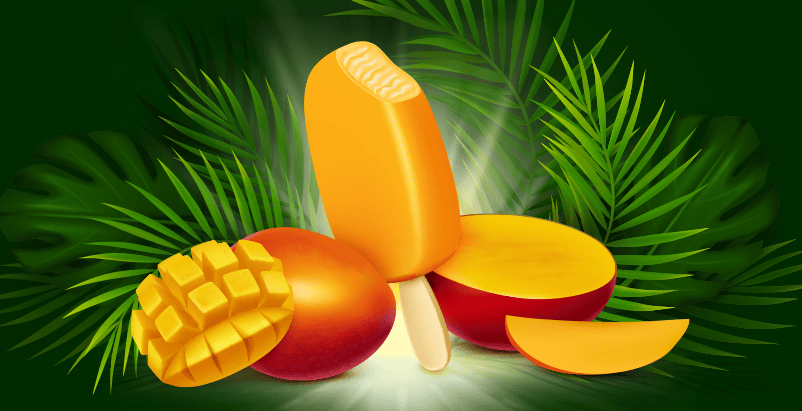
Terpenes 101: Myrcene
The most prevalent terpene in cannabis, myrcene is known for having an earthy scent and flavor. It's interesting that it has a lot of desirable qualities, including sedative, analgesic, and potentiated barbiturate sleep time effects.
Terpenes are essential to the cannabis experience and are what give each strain of cannabis its own flavor, aroma, and effects. The entourage effect is a synergy created when terpenes combine with cannabinoids and other substances to either enhance or decrease the effects of cannabis.
The cannabis plant contains more than 120 terpenes that have been linked to more than a dozen health advantages, including increased energy, relaxation, and improved sleep. We will examine the most recent research demonstrating the possible advantages of myrcene use in this brief overview.
What is Myrcene?
A common monoterpene found in lemongrass, hop (Humulus Lupulus), mango, verbena, bay leaves, and thyme, among other plants, is myrcene, also known as alpha-myrcene and beta-myrcene. It is the terpene that is most prevalent in cannabis.
Myrcene includes 65% of the terpene concentration in a cannabis plant, according to a study done by the Swiss Federal Research Station for Agroecology and Agriculture (Mediavilla & Steinemann, 1997). It is typically utilized as an intermediary by the fragrance industry to create derivative terpenes, and it is described as herbal or earthy.
It is also known to be an effective sedative, painkiller, anti-inflammatory, and muscle relaxant. Myrcene is thought to hasten the action of cannabinoids, causing the intended effects to be felt more quickly.
Myrcene's Aroma
Cannabis cultivars typically contain several terpenes at once. The overall scent profile and therapeutic efficacy are influenced by the ratios present.
One of the ten important terpenes generated by the cannabis plant is myrcene. This chemical has a scent that is comparable to something like cloves. It is a component element of menthol and citronella and, as was already said, has a strong earthy and spicy flavor.
It should be emphasized that Myrcene functions as a universal precursor to other terpenes, just like CBG-A does for other cannabinoids like THC and CBD.

Strain Profiles We Carry At Terp Science Labs:
- Blue Cheese
- Blue Dream
- Bubba Kush
- Cherry Pie
- Forbidden Fruit
- Grand Daddy Purple
- Grape Ape
- Green Crack
- OG Kush
- Mimosa
- Northern Lights
- Pineapple Express
- Strawberry Cough
- White Widow
These strains are said to be the best ones for people who need to alleviate pain, inflammation, and sleeplessness. They are renowned for their "couch-lock" effects when used for leisure. Myrcene strains should only be used in the evening because they are best suited for indica cultivars, where they are more likely to cause sedation.
How Myrcene Interacts with Other Cannabinoids: The Entourage Effect
In the human body, cannabinoids and terpenes combine to modify one another's effects and essentially produce an overall different, or "greater," efficacy based on the presence of the same molecules and, equally important, the ratios in which they appear.
Because myrcene functions best when combined with other substances in a complex Phyto-cannabinoid environment, "the entourage effect" is crucial to realizing the full benefits of this molecule.
The results of Russo's study showed that Myrcene and other significant cannabinoids, such THC and CBD, can interact in a number of positive ways.
Myrcene and CBG may be anti-cancer.
Myrcene and CBD together help fight cancer, lessen pain, and reduce inflammation.
THC combined with myrcene is thought to provide analgesic (pain-relieving) and muscle-relaxing effects, as well as improved sedative and tranquilizing effects.
The Benefits of Myrcene
The terpene Myrcene has a number of therapeutic advantages in addition to famously increasing THC in some strains of cannabis:
Effects that are sedative: Myrcene-rich strains are known to cause "couch-lock" or sedation. Myrcene can lengthen the period that a barbiturate keeps a person asleep, proving the terpene's potential as a sedative. They may sedate and reduce motility in large doses.
Effects on inflammation: Scientists discovered that Myrcene had anti-inflammatory effects on cells, slowing the development of disease and injury.
Myrcene's anti-inflammatory qualities may help kill malignant cells, which has an anti-tumor effect. It might contribute to the anti-metastatic activity of human breast cancer cells, according to a 2015 study.
Analgesic effects: According to a 1990 study published in the Journal of Pharmacy and Pharmacology, myrcene may lessen nociceptive pain, which is the discomfort brought on by injuries like sprains and bruises.(Menezes, Rao, & Viana, 1990). The research reveals that this terpene affects the endogenous opioids produced by the body.
Myrcene may help persons with diabetes increase their glucose tolerance. Myrcene has been shown to 28.1% lower serum glucose levels in diabetic rats, according to a 2007 article by Al-Omari. The well-known diabetes drug metformin lowers blood sugar levels by 28.5%.
Antioxidant: A 2017 study found that myrcene may have the ability to shield skin from the aging effects of UV light. Myrcene, which functions as an antioxidant, might be a useful addition to sunscreen and anti-aging creams.
The Urban Legend of the Mango
Numerous urban myths surround cannabis use and use, as usual. Many people think that eating mangos can increase the potency of cannabinoids like THC since they produce large amounts of Myrcene.
According to urban mythology, eating mangos 45 minutes before using cannabis may hasten the onset of psychoactive and increase its severity. The "entourage effect" may be clearly demonstrated in this situation. These are just anecdotal experiences, though, and need additional scientific validation.
In a Nutshell, Myrcene
Other research projects, in addition to Russo's 2011 study, have demonstrated the therapeutic usefulness of myrcene. Myrcene has sedative properties and is beneficial in treating anxiety, insomnia, and other sleep disorders, according to a 2002 study.
As was already noted, this terpene is the most abundant in marijuana and has a variety of advantageous benefits. This implies that, among other things, strains with high myrcene concentrations might be useful for treating pain and stress. Myrcene may assist people manage various ailments and have a stronger psychedelic effect.
**Note: As always, for specific medical advice on medical issues and symptoms, speak with your doctor. The Food and Drug Administration has not reviewed the claims made regarding these products. FDA-approved studies have not verified the efficacy of these products. These items are not meant to be used in the diagnosis, treatment, cure, or prevention of any illness.



